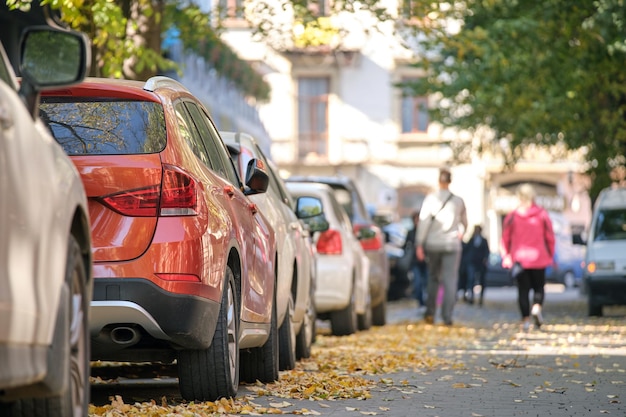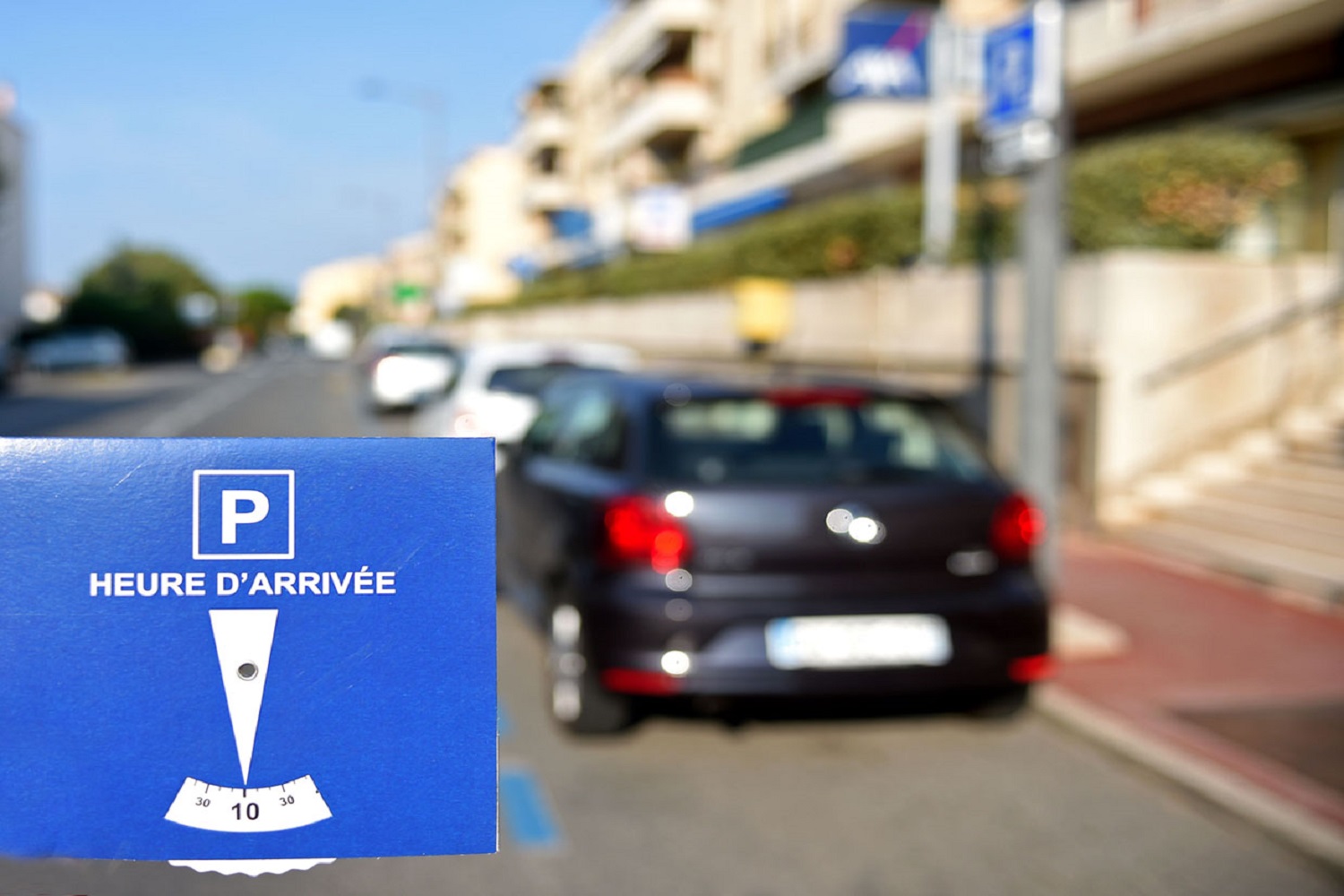
Understanding the rules of parking in France is essential for all road users, whether residents, shopkeepers or visitors. Parking regulations play a crucial role in the management of urban spaces, traffic flow and the quality of life of city dwellers.
In France, different parking regulations are in place to meet a variety of needs: relieving congestion in city centers, reducing pollution, encouraging vehicle rotation and guaranteeing access to infrastructures for all users, including people with reduced mobility.
I – How is parking regulated in France?
What is the role of the State?
The French government sets the general legislative and regulatory framework for parking in France. National laws set by the State determine the basic rules and penalties for infringement. Law no. 2014-58 of January 27, 2014 on the modernization of territorial public action and the affirmation of metropolises(the MAPTAM law) transferred responsibility for managing parking fines to local authorities. The State is also responsible for the Highway Code, which includes all parking regulations.
Decriminalisation of parking and FPS
You should know that parking has been decriminalized since January 1, 2018, and it’s the fps (forfait post stationnement) that has replaced it. It’s a parking fee for exceeding an authorized parking time, not a fine. It should not be confused with a parking fine, which is a lump-sum fine imposed forparking violations.
What is the role of local authorities?
Municipalities are responsible for managing and regulating parking at local level. They define the specific rules, decide which zones are paid, free or alternating, and set the rates and times for paid parking. Each city has its own policy in this area, within the framework of French regulations.
In Paris, surface parking is limited to 6 consecutive hours. See the following section for examples of regulations.
3 global parking policies: authorized paid, authorized free, prohibited

Authorized paid parking
The mayor can also charge for parking. This can take the form of conventional payment at the parking meter, or remote payment by cell phone or Internet. Read our article on parking payment applications here.
Free authorized parking
For the majority of parking spaces in medium-sized towns, mayors opt for free parking. Just because parking is free doesn’t mean there are no rules. For example, free parking spaces may be subject to rules such as unilateral semi-monthly parking or time-limited parking, as with blue zones.
Prohibited parking: 4 categories of prohibition and disruptive parking
Excessive parking and time limits
Article R417-12 of the French Highway Code deems any uninterrupted parking on the same public road for more than 7 days (or for longer than the duration imposed by the local authority) to be improper.
Obstructive parking
Article R417-10 of the Highway Code considers parking to be a nuisance:
in front of an electric charging station, in a reserved space (cab, bus), in an underpass, in a space reserved for deliveries (outside authorized hours), in a space that prevents access or clearance by another vehicle, on an emergency lane unless absolutely necessary, on a bridge, in a tunnel or in front of the driveway of a building.
Very annoying parking
Article R417-11 of the Highway Code considers parking to be a major nuisance:
on bike paths, sidewalks, disabled parking spaces, cash-in-transit parking spaces, bus/taxi/ambulance lanes, on green lanes (except authorized vehicles), on crosswalks and less than 5 m upstream of a crosswalk in the direction of traffic (excluding designated parking spaces).
Dangerous parking
Article R417-9 of the Highway Code defines parking as dangerous:
near a bend, hilltop, intersection or level crossing with poor visibility.
Find out more about awkward parking here.
How is parking controlled?

Who controls parking?
The ASVP (agents de surveillance de la voie publique) and the municipal police are responsible for surveillance and fines. The agent checks that vehicles are in order and have a valid parking permit. If the fee is not paid, an FPS is drawn up and sent to ANTAI (Agence nationale de traitement automatisé des infractions). They can also issue fines for non-compliance with the parking rules mentioned above.
What’s the difference between an ASVP and a municipal police officer?
There is, however, a difference between an ASVP and a municipal police officer.
- The ASVP is only authorized to issue fines for offences relating to stopping and parking vehicles, with the exception of dangerous parking.
- Police officers are fully competent to punish offences. The inspector can also take action such as impounding or immobilizing the vehicle.
How many parking tickets are issued in France?
In 2022, over 40 million parking tickets were issued in France. These include 11.1 million for FPS, and 7 million for illegal parking.
Using technology to better control parking
Today, parking enforcement officers have an arsenal of technology at their disposal. Gone are the days of paper tickets and manual plate reading. Surveillance cameras and parking sensors can be used to detect violations. The cameras can record the number plate of the vehicle concerned, enabling it to be ticketed remotely.
They also use vehicle-mounted ANPR (automatic number plate recognition) cameras to issue fines while on the move.

II – What parking rules apply to different types of spaces and zones?
Alternating parking zones
As seen above and explained in the title, this rule imposes alternating parking. From 1 to 15 on the even-numbered address side of the street, and from 15 to 31 on the odd-numbered address side.
It is governed by article R417-2 of the French highway code.
Semi-monthly unilateral parking is a parking rule and strategy that forces users of certain streets to park on one side and prohibits parking on the other. This alternation is organized according to different periods of the month. Information on this rule is posted on signs around town. For example, from 1 to 15 parking is on the even side, then from 15 to 31 on the odd side.
Time-limited on-street parking
The blue zone: official parking regulations
To ensure good rotation of parking, without having to pay for it, local authorities can decide to use parking discs. Parking is free, but for a limited time. Spaces reserved for discs are indicated by blue road markings. This is known as the blue zone.
The blue zone disc allows drivers to define their arrival time when they wish to park in a blue zone, and thus justify their free parking. Individuals can obtain a free regulation disc from the town hall or a service station. In general, you can park your car in the blue zone for 1h30. However, each municipality sets its own parking time. That’s why it’s important to check the blue zone parking time indicated on the signs or on the parking meter. The disc must be visible to staff, showing the time the vehicle was immobilized.
Parking in the blue zone is subject to certain rules. You risk a 2nd class fine(article R. 417-3 of the French Highway Code), i.e. a €35 fine if: you don’t have the correct disc, your parking disc isn’t properly adjusted or isn’t visible on the windscreen.

Other examples of names for time-limited parking rules: green, orange, red zones
Green zones
Located on the outskirts of towns and cities, green zones enable drivers to park in a park-and-ride facility and then take public transport to the city center. These are generally long-term zones where you can park for the day.
In Gennevilliers (Ile-de-France), for example, the green zone is accessible to vehicles with a green sticker for a maximum period of 7 days. However, for those who don’t have one, the maximum duration is 5 hours. All motorists must indicate their arrival time on the parking disc prominently displayed under the windscreen. If you arrive at 2:30 p.m., you’ll need to set your disk to 7:30 p.m. Once the authorized time has elapsed, or if the disc is missing, the fine is €35. The green zone is the same as the blue zones defined inarticle R. 417-3 of the Highway Code.
Red zones
Most often located in the heart of the city in shopping areas, red zones are very short-lived. This allows for better vehicle rotation, which is often limited to 2 hours. However, the duration can vary depending on the commune. Tours, for example, has limited its red zone to 3 hours.
Like the blue zone, these zones are subject to the rules set out in article R417-3 of the Highway Code.
Off-street parking
Public parking lots
Public parking lots are accessible to all, sometimes for an hourly or daily fee. They are managed by local authorities or private companies such as Vinci under delegated public service contracts. Rates and access conditions vary from city to city and from manager to manager.
As they are accessible to the public and open to traffic, they are subject to the parking regulations of the Highway Code.
Private parking lots and regulations
Private parking lots are managed by companies or individuals. They can be reserved for a specific clientele, such as customers of a shopping mall, employees of a company or residents of a building. Access rules and rates are determined by the parking lot manager. They may be open to the public on payment of a fee, but remain the property of the private entity that manages them.
This is what Zenpark, for example, a private parking lot manager, offers, enabling anyone to access and reserve or rent a space.
If the parking lot is open to traffic, the rules of the highway code apply. There is one exception, however, if the latter is accessible by code or remote control. In this case, the police cannot intervene inside.
Residential parking lots
By law, all new residential buildings must include parking spaces. This obligation is governed by the French Urban Planning Code, in particular article R. 111-14-2. Specific rules and the number of parking spaces required may vary according to local planning regulations (PLU). Residential parking lots are generally reserved for building residents and their visitors, and may be managed by the condominium association or a property management company.
If the parking lot is accessible to the public, then the rules of the highway code apply. On the other hand, if, as in the case of private parking lots, access to them is forbidden to the public, then they are not subject to the rules of the highway code.
Parking rules for specific spaces: PRM, deliveries, cabs and recharging stations

Disabled access and people with reduced mobility
The law requires the creation of parking spaces reserved for people with reduced mobility (PRM). Under article L. 241-3-2 of the French Code de l’action sociale et des familles , parking lots must reserve at least 2% of their spaces for disabled people, with a minimum of one space. These spaces must be located close to entrances and be wide enough to allow wheelchair access.
Under article R417-11 of the French Highway Code, parking in a disabled space by a person who does not hold a CMI (Carte de Mobilité Inclusion) is considered a major nuisance. Failure to comply will result in a fine of €135, or even impoundment of the vehicle.
Delivery areas
Delivery zones are specifically reserved for vehicles loading and unloading goods. These zones are generally time-limited and marked with signs and road markings. They are governed by article R417-10 of the Highway Code, which deems any parking on“spaces reserved for the stopping or parking of delivery vehicles to be a nuisance; the police authority may, however, define by decree the times during which parking is authorized“.
This is the case in Paris, where parking is authorized from 8 p.m. to 7 a.m. on delivery spaces marked on the ground with a solid or dotted line. It is reserved for deliveries from Monday to Saturday, 7am to 8pm. However, it is forbidden to park on delivery bays with a continuous double line, 24 hours a day, 7 days a week and on public holidays.
Cab stands
Cab parking zones are strategically located at railway stations, airports and city centers. These areas are reserved exclusively for cabs waiting for customers and are identified by specific signs.
Regulation of these zones is once again subject to article R417-10 of the Highway Code. It considers any parking“in spaces reserved for the stopping or parking of public passenger transport vehicles, cabs, vehicles holding the car-sharing label or vehicles assigned to a public service” to be a nuisance.
Charging stations
Parking spaces equipped with charging points for electric vehicles are becoming increasingly common. These spaces are reserved strictly for electric vehicles during the recharging period. They are often located in public parking lots and on roads.
Parking of non-electric vehicles or vehicles that do not use recharging is prohibited. What’s more, under article R. 417-10 of the Highway Code, parking in front of a charging station is punishable by a fine. Penalties include a fixed fine of €135 and may even include immobilization or impoundment of the vehicle.
III – Optimizing roadways, curb management
The current situation: poorly used roads
Today’s cities face increasing challenges in terms of road management. Parking spaces are often poorly used, leading to congestion, pollution and inefficiency. Illegal parking, delivery zones occupied by unauthorized vehicles, and spaces reserved for the disabled frequently occupied by abusive drivers are common problems.
This poor management of roadways has negative repercussions on traffic flow, pedestrian safety and the quality of life of city dwellers.
All-in-one solution for parking and curb management
Cocoparks ‘ fully-integrated solution provides control assistance for local authorities and roadworkers. Thanks to AI and real-time detection of parking spaces, the system will give immediate warning of any infringement. This is done either through the control software, or by mobile push notification received by the agents in the field, enabling them to be more efficient and enforce parking regulations.
In brief
The regulation of parking in France is crucial to smoothing traffic flow, reducing pollution and improving the quality of urban life. There are so many rules, it can be hard to keep track. Street optimization is taking on a new lease of life thanks to solutions like Cocoparks; which uses AI for efficient, real-time management of parking spaces.


